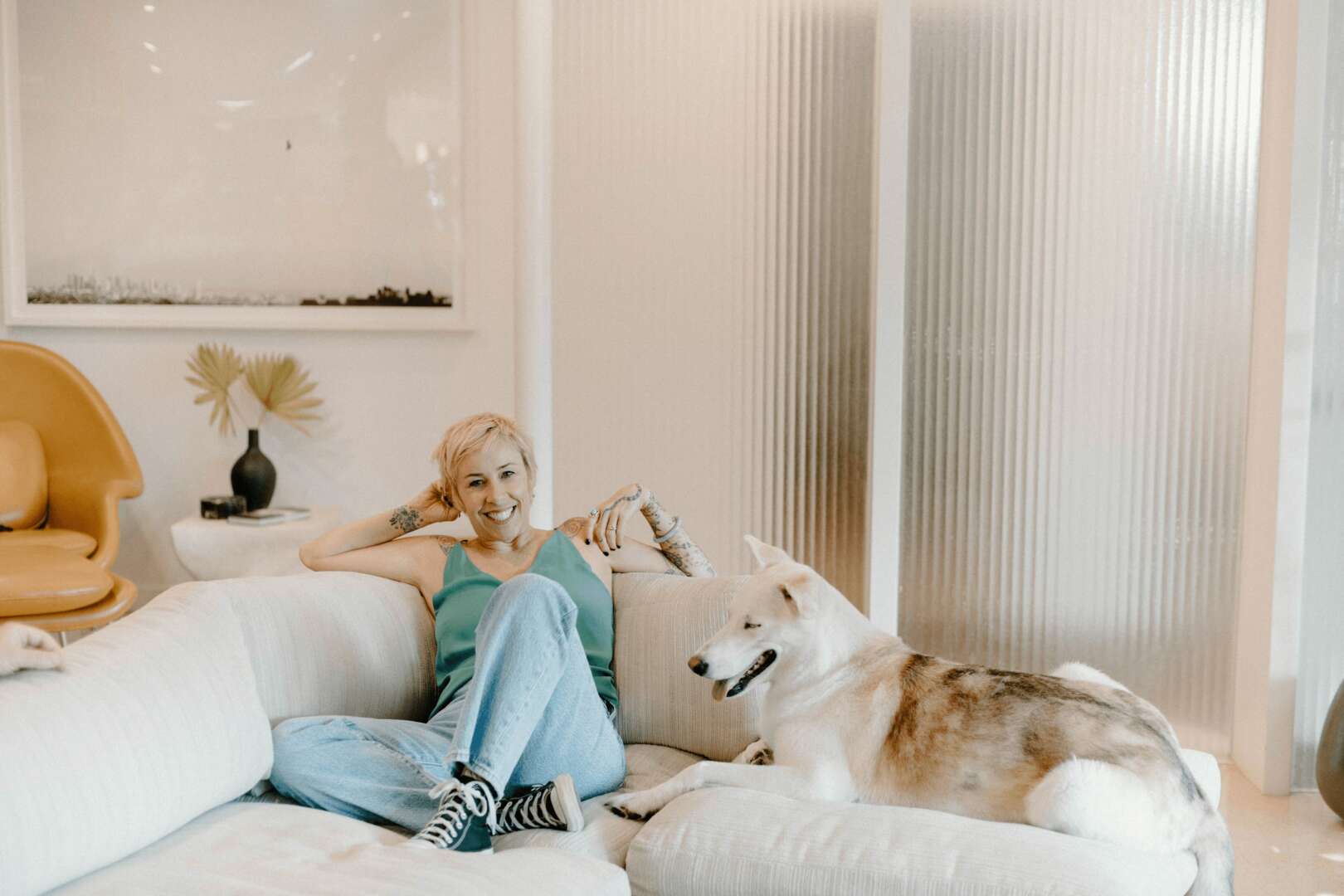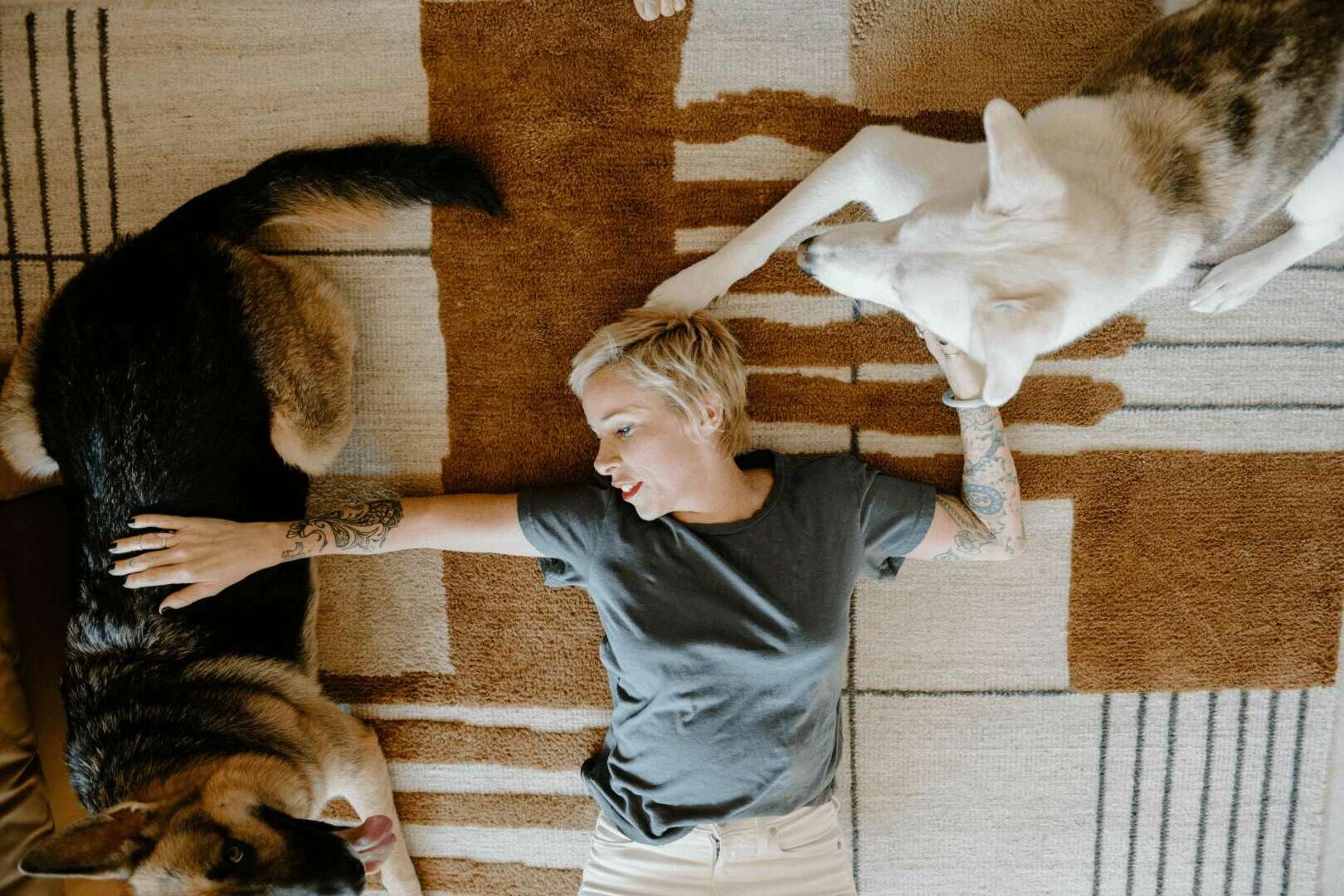We recently connected with Jill Guin and have shared our conversation below.
Jill, thanks for taking the time to share your stories with us today Risking taking is a huge part of most people’s story but too often society overlooks those risks and only focuses on where you are today. Can you talk to us about a risk you’ve taken – it could be a big risk or a small one – but walk us through the backstory.
My life has been constant risk-taking… I think that’s why I chose this direction! ahahah!
As a kid and an adult, I’ve always gone against the grain and chosen the path of resistance. It’s almost spiritual for me, not out of ego but of always questioning the status quo.
Regarding my career, which translates to my passion and ethics, I first started with the most common training method: punishment and dominance. This is how our world has been designed. We all follow a system of hierarchy, with authority figures and who’s more dominant and aggressive. I was raised this way, and it made sense to me. I also have benefited from these systems. As a small human female, I learned to be tougher and more masculine to get my needs met and feel safe.
This way of being is so ingrained in us that it’s really hard to see another kinder and softer way of being (at least for me.) So, I took on this way of training with rescue dogs and ran with it. I saw that it worked at first, and so it must be right ;) Using dominance and punishment as a way of training looks like walking into a dog’s space and using only your body to push them back, shock collars, verbal punishments, or leash pressure on their necks.
Most dogs will feel afraid if you’re an unknown human, which we usually are as trainers and they will do what we need them to do. So, this looks like it works to ‘fix’ behavior, right?
These methods work to stop some behaviors, but do they help dogs actually to change?
What we’re doing is adding stress and anxiety the moment the dog does that undesirable behavior, intensifying their emotions and making the situation worse. An example might be a dog barking at an unknown human and maybe even growling. You shock that dog, and they now feel worse and more afraid of that new and known human. Sure, you’ve stopped the behavior from happening, but at what cost?
The cost is most typically, we correct that behavior, and now the dog’s warning voice has been silenced; they’re more afraid and expecting pain because we’ve paired pain and fear with this new and known human. They will usually have to resort to a bite.
So, I started working with the biggest trainers in LA, learning how to train using dominance, and discovered it was complete abuse. Clients often didn’t see this training because these trainers usually only board and train in their homes. After a while, the punishment had to go up in level, and I saw dogs only get worse and shut down.
I decided to leave the entire world of training because it was so unhealthy and triggering for me to be around this kind of aggression, that was not only used on dogs but very much on humans. This, to me, looked like an entire group of humans who had a history of trauma (like myself), using punishment and intimidation to control dogs and their guardians.
This training brought up a lot for me: old trauma, unhealed. I started back up into therapy and realized I had been numbing pain for my entire life with alcohol and got sober. It’s not been an easy road, but I’m on the other side now.
After leaving dominance training, a friend who is a human behaviorist (BCBA) invited me to The Chatt conference in Seattle. This conference is led by the leading animal and human behaviorists in the world. I met trainers using positive reinforcement and science to train dolphins in open water, detect bombs, and teach apex predators to offer a hip for an injection.
My thoughts continued: If these trainers don’t have to use punishment to train apex predators, then why are we teaching humans to use punishment on a dog? My mind was blown!
I told every animal trainer my story; they didn’t judge me; they showed compassion and kindness and then told me exactly what to do. I had no idea what was ahead, and HOLY SHIT, I feel so lucky to be here.
I went to Karen Pryor Academy, which I feel is the best dog training school currently known. I enrolled in the University of Washington’s applied animal behavior, which is also magical! I have read every book suggested and taken every course that comes my way. I have many letters (AKA: certifications) behind my name now, not for my ego but because I respect my field, humans, and animals. I believe education is important for me to call myself a responsible trainer.
The entire journey involved constant risk-taking and allowing the path to come to me, but the biggest part has been giving up aggressive communication in ALL areas of my life. I learned that to protect myself, I used all kinds of aggressive communication, from subtle to not-so-subtle. When I’m afraid, I’m also reactive and mean, and I was so blessed to give that up.
Because I’m so well-versed in aggressive behavior (humans and dogs), I specialize in working with aggression. I love working with humans who are like me, very comfortable using punishment, and ready to give it up, even if they don’t know it yet.

Great, appreciate you sharing that with us. Before we ask you to share more of your insights, can you take a moment to introduce yourself and how you got to where you are today to our readers.
It all began when I was 16, with my first two dogs, Holly and Kenai.
I found my dog Holly, a pit-mix, and within the first 6 months, she had bitten many humans and attacked a few dogs.
We already had another dog, Kenai, who had also bitten humans. We had no idea what to do. It was 1990-ish…
I was not a stable teenager, but somehow, I found a trainer. This trainer’s expert advice was that my dogs were dominating me, and the solution was to keep them off of furniture. (Eye roll) At the time, I took that training advice and listened, and for the next 15 years, I never let animals on the furniture.
Their aggression grew worse, and I struggled to manage and live with it. I moved to many different states with these dogs and avoided all humans and dogs. This wasn’t always possible, living in cities like Seattle, so we did have more incidents. Each of my dogs had been quarantined many times.
Over the years, I tried more training and never made any real progress. I finally gave up and figured you could do nothing for dogs that showed aggression.
After both dogs passed, I started fostering dogs for different rescues, which led me to training. Again, I found it very difficult to find good and educated trainers. The advice I got was typically very silly, unhelpful, and even sometimes harmful. I eventually found a trainer who is very well known on Instagram and in LA, and I started working for her and, in turn, with many of her friends. They were all trainers who once worked for Cesar Millan and used dominant training. On social media, these trainers seem to be doing great work, but behind the scenes, they were using extreme forms of punishment that were painful and emotionally harmful to dogs.
I’m not saying I didn’t jump on board with this type of training; I did! I wanted it to work so badly and was good at punishing! When you look at it, many of us are! We might use punishment subtly or more overtly because it’s systematic! This world is full of this kind of communication, look at our police, prisons, military, who we support our allies and our government. This is how I broke free of using punishment in all forms of my life.
This is who we are; we, as dog trainers, are always growing and looking at our communication and how we teach humans and then their dogs. We teach everyone at all levels, and we meet them where they are. Nobody is wrong or doing anything bad.
Many clients come to use using shock collars, which can now be triggering for me! I hurt my own dogs using them, and I haven’t forgiven myself for those sh*tty methods, but that’s on me. So, I don’t judge anyone.
We’d love to hear a story of resilience from your journey.
My entire life has been resilient, but when I broke down from the experience of working in the dominant world, I really felt like I was worth nothing. It’s hard to say that here, but I only know how to be truthful, which has worked for me in the past ten years. My childhood was full of aggression, and abuse was happening everywhere. I was already told I was dumb throughout my childhood, and I felt like nothing then. So, this experience brought it back up for me and took me down.
I also was struggling with alcoholism to numb and relax. I started to talk more about my drinking; not too many could see it, and I kept it a secret (I thought.) During this time, I was so depressed that I was thinking about drinking more and more, and my depression took over. This led me to get sober and start healing.
The world opened up for me; it opened me up to the science of animal training, how to ethically treat animals, how they learn, and the harms of punishment. This became an obsession for me… I hadn’t realized this is also how you can communicate with humans. This path is 100% what’s helped me heal my life my past and build healthy relationships with all humans as well.
What’s been the most effective strategy for growing your clientele?
I lead our business by being as real and myself as possible. I honestly feel that if I’m 100% real and transparent and care for my clients, they will come to me, and they do.
I use curse words, am authentic, don’t make promises I can’t keep, and am not here to fix dogs or humans. I’m here to help, give them agency, a voice, support, and teach them scientifically proven methods that will only help their dogs. This is not my advice, but science has proven our methods to work.
I let go of the clients that aren’t for us and what could happen if they get the wrong trainer. I’m not here to fix anyone. I’m here to give everything I have if that human is ready. They often aren’t ready for us! Lol. And that’s okay, too!
I feel that I do the opposite of what they tell you in business; I talk politics and say what’s on my heart.
Contact Info:
- Website: https://underdogslb.com
- Instagram: https://www.instagram.com/underdogs.longbeach/
- Yelp: https://www.yelp.com/biz/underdogs-long-beach-long-beach?sort_by=date_desc


